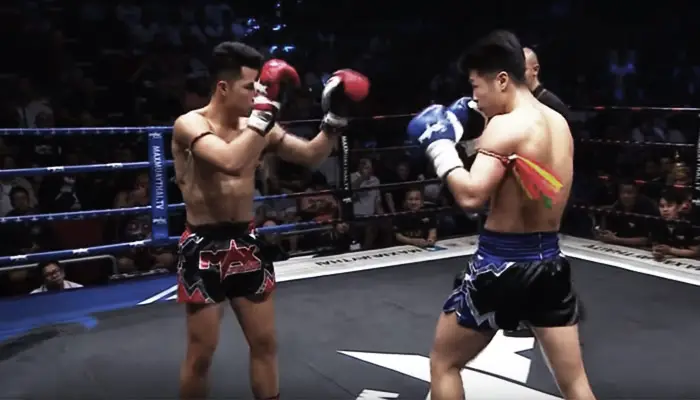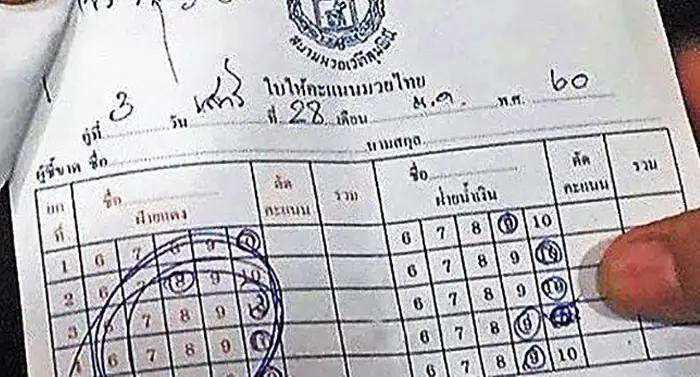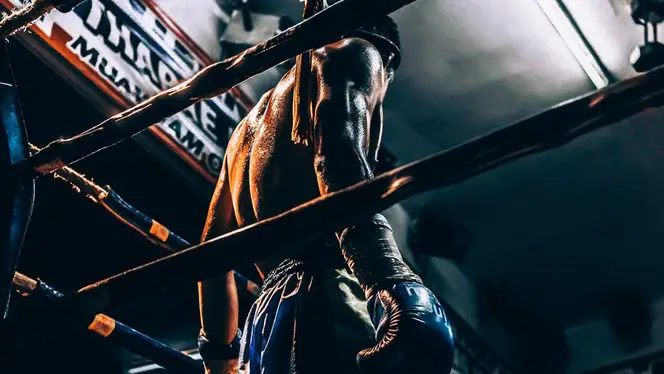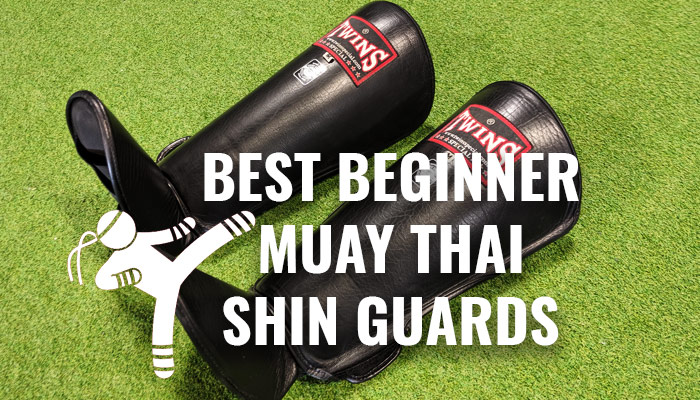Muay thai boxing is one of the most effective martial arts in the world. It’s not watered down with too much BS like other traditional martial arts. It’s based on a pure fighting sport and focusses on hard training like kicking pads and sparring.
Muay thai has a reputation for being brutal. This is partly because of its effectiveness in different fighting promotions like the UFC and K-1. Whether your goal is to lose weight, learn how do defend yourself, or to become a fighter, it can be intimidating to just join a gym and learn something new.
Once you read this ultimate beginner’s guide you’ll be able to decide if muay thai is right for you (Hint: it is). You’ll also get a lot of training tips to help you progress faster and go from beginner to intermediate quickly.
Muay thai literally means “thai boxing”. It’s a striking art that originated in Thailand and came from an ancient martial art called muay boran, which means ancient boxing.
Muay boran was used in wars but also in contests where fighters would wrap their hands in hemp rope. The ropes were meant to both protect the fighter’s hands and cut their opponent open.
In the 1920s-1930s, King Rama VII pushed to modernize muay boran and make it more like western boxing. Instead of hemp ropes, fighters wore boxing gloves. Referees, rounds, and rings were also introduced.
Muay thai is called the art of eight limbs. Unlike boxing, you can hit with your feet/shins, hands, knees, and elbows.
You have eight different striking tools at your disposal, but muay thai is more than just striking. There’s also defense, movement, and clinching. Read our list on muay thai techniques to learn more.
In self defense, your goal is to dispatch your attacker and GTFO. Muay thai is perfect for that.
You not only have punches, but you can mix it up with kicks, knees, and elbows that most attackers would not see coming. If your attacker tries to grab you, you also have the clinch to grapple while standing.
Unlike traditional martial arts, we train with drills and real sparring. You get to actually practice against a partner who is really hitting you vs someone who is pretending to like in simulation or “step” sparring.
Having the confidence to perform techniques in a live environment will give you the edge if you ever have to defend yourself.
All of these things make muay thai great for self defense.
In a typical class, you will warm up as a group. This involves skipping rope/running, some mobility and stretching, and shadowboxing.
After the warm-up, you will likely learn new techniques to practice either on your own, with a partner or with a trainer. Depending on the class you drill techniques on the bag, thai kicking pads, or against a partner who is also wearing gear.
More advanced students will get to participate in sparring and clinching.
In between rounds or after training on the bag and pads, there’s is usually a body conditioning component such as core strength training and other calisthenics.
Professional fighters in Thailand train similarly. The fundamentals are the same, but there is more of a focus on sparring, clinching, and they train longer, harder, and more often than beginners. Read this post if you want a look into how fighters train.
Choosing the right gym will make a big impact on your muay thai journey. Choosing the wrong gym will also make a big impact, just negatively.
First, check out Google maps to find a gym in your area or on your commute and read the reviews. You’re not trying to see if gyms have 5/5 stars, but if there is a lot of negative feedback that might be a sign to stay away.
You can also check your network for anyone who trains. Maybe you know someone who loves their gym. Now’s your chance to find out.
The style of gym you choose depends on your preference. If you also want to learn grappling, then check out MMA gyms. Maybe you’re looking for authentic muay thai or a mix of muay thai, kickboxing, and boxing. Find a gym that suits your training style.
Once you have a list of gyms, check out their websites and Google the instructors. Try to find out if they’re legit and have fights under their belt. Also, check out their class schedule. Does it work with your current schedule? Would you be willing to shift things around if needed?
Find out when the beginners class is and go try it. Would you go back? Were the facilities clean? How was the culture?
At a bare minimum, you’re going to need a good pair of gloves, hand wraps, a training shirt, muay thai shorts, and a mouth guard.
I also highly recommend getting an athletic cup. You won’t need to get a headgear right away because you won’t be sparring until later. You’ll need shin guards for doing partner drills once you get the basics down, so you should get them sooner rather than later.
If you want to take your training further you can do some extra training at home with a heavy bag.
As a beginner, your number one focus should be on getting to the gym and training consistently. The more hours you put in the better you’ll get.
When training, try to focus on basic technique. I see a lot of guys trying to blast kicks with power and speed. Power will come, just focus on making sure your form is good and up to your trainer’s standards. Working on the fundamentals now will help you succeed later and stop you from learning bad habits.
Cardio is another thing to work on. You need to at least be able to complete the class without dying, to make the most of your training. Working on your cardio with long distance running to build up your basic anaerobic capacity will help a lot in your training.
Like any other full-contact sport, there is some danger when training muay thai. It can be mitigated by taking proper precautions. Trainers are there to supervise and make sure everyone is being safe.
When sparring, make sure you have good quality gear on that will protect you and your partners. That means 16 oz gloves, thick shin guards, a headgear, cup, and mouthguard.
For beginners, sparring is only done at 50% power. You rotate through partners so if you’re stuck with someone who is a spaz and doesn’t know control you can let them know to go lighter. If they still don’t listen, feel free to sit the round out.
As a beginner the most important thing is to get to training. If you have any questions feel free to comment below, and I’ll try my best to answer them.





